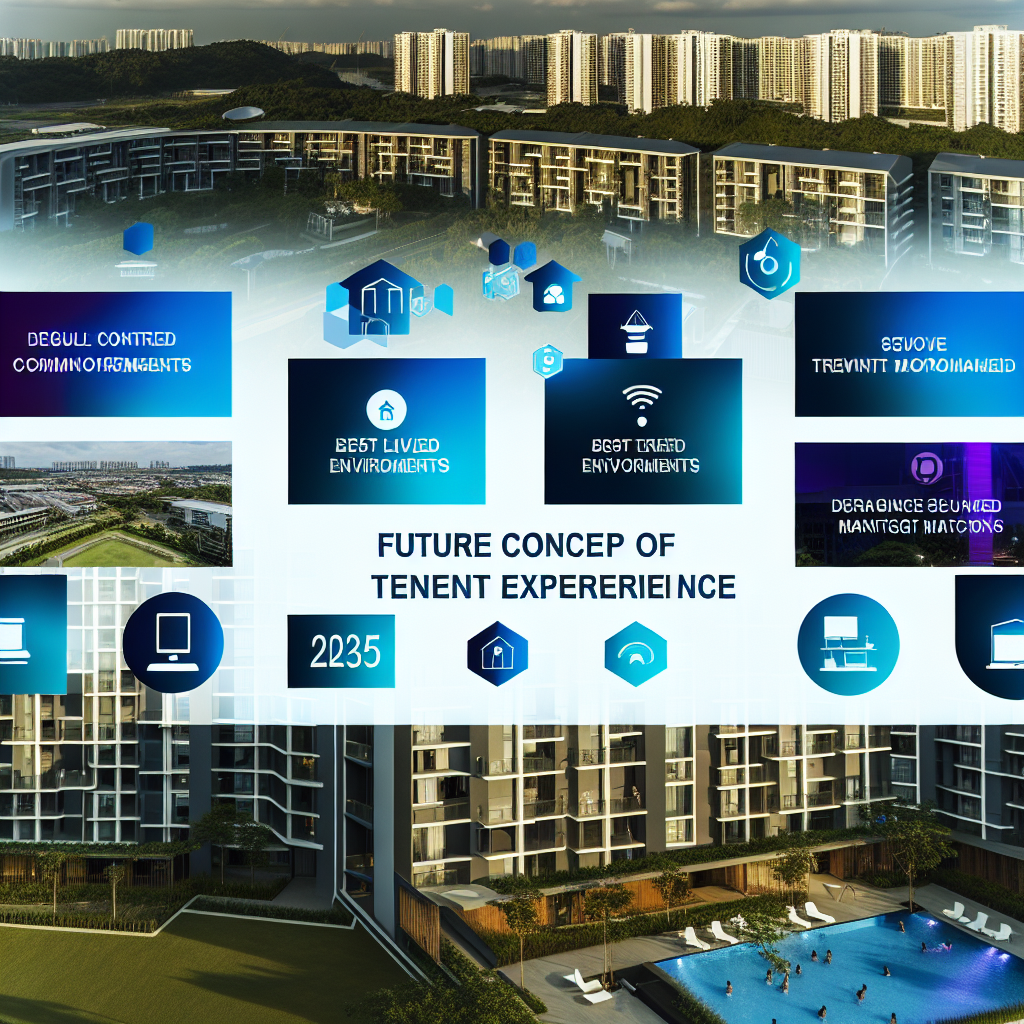Revolutionizing Resident Benefits: Top Community Amenities Enhancing Tenant Experience in 2025
As we approach 2025, the landscape of residential living is undergoing a significant transformation, driven by innovative ideas aimed at enhancing tenant experiences through revolutionary community amenities. The focus is shifting from merely providing a place to live to creating vibrant, engaging environments that foster a sense of belonging and well-being among residents. This evolution in residential living is characterized by a commitment to integrating technology, sustainability, and community-centric designs that cater to the diverse needs of modern tenants.
One of the most notable trends in enhancing tenant experience is the integration of smart home technology within residential communities. As technology continues to advance, smart home features are becoming increasingly accessible and desirable. These features include automated lighting, climate control, and security systems that can be managed remotely via smartphones or voice-activated devices. By incorporating these technologies, residential communities not only offer convenience and efficiency but also enhance security and energy management, ultimately leading to a more comfortable and sustainable living environment.
In addition to technological advancements, there is a growing emphasis on sustainability and eco-friendly living. Residential communities are increasingly adopting green building practices, such as using sustainable materials, implementing energy-efficient systems, and incorporating renewable energy sources like solar panels. These initiatives not only reduce the environmental impact of residential buildings but also offer cost savings to residents through lower utility bills. Furthermore, the inclusion of community gardens and green spaces encourages residents to engage with nature, promoting physical and mental well-being.
Moreover, the concept of community living is being redefined through the creation of shared spaces that foster social interaction and collaboration among residents. Co-working spaces, communal kitchens, and rooftop lounges are becoming standard amenities in modern residential communities. These spaces provide opportunities for residents to connect, share ideas, and build a sense of community, which is particularly appealing to younger generations who value social engagement and networking.
Another innovative approach to enhancing tenant experience is the incorporation of wellness-focused amenities. Fitness centers, yoga studios, and wellness programs are increasingly being integrated into residential communities to promote a healthy lifestyle. Additionally, some communities are offering mental health resources, such as meditation rooms and access to counseling services, recognizing the importance of mental well-being in overall quality of life. By prioritizing wellness, residential communities are not only improving the health of their residents but also creating environments that support holistic well-being.
Furthermore, the rise of personalized services is transforming the way residential communities cater to their tenants. Concierge services, package delivery management, and personalized event planning are becoming more prevalent, offering residents a level of convenience and luxury that enhances their living experience. These services are designed to simplify daily life, allowing residents to focus on what truly matters to them.
In conclusion, the future of residential living in 2025 is characterized by a commitment to enhancing tenant experiences through innovative community amenities. By integrating technology, promoting sustainability, fostering social interaction, prioritizing wellness, and offering personalized services, residential communities are creating environments that not only meet the needs of modern tenants but also enrich their lives. As these trends continue to evolve, the focus will remain on creating vibrant, inclusive communities that enhance the quality of life for all residents.
Innovative Property Perks: Elevating Community Value and Convenient Living for Residents
As we approach 2025, the landscape of residential living is undergoing a transformative shift, driven by innovative property perks that aim to elevate community value and enhance the convenience of living for residents. This evolution is not merely about providing a roof over one’s head but about creating an environment that fosters community engagement, sustainability, and a higher quality of life. The integration of cutting-edge technology and thoughtful design is at the forefront of this movement, offering residents a living experience that is both enriching and convenient.
One of the most significant trends in enhancing community living is the incorporation of smart home technology. This innovation extends beyond individual units to encompass entire residential complexes. Smart lighting, climate control, and security systems are becoming standard features, allowing residents to manage their living spaces with unprecedented ease and efficiency. These technologies not only contribute to energy savings but also enhance the safety and comfort of residents, creating a more appealing living environment.
In addition to technological advancements, there is a growing emphasis on sustainability and eco-friendly living. Residential communities are increasingly incorporating green spaces, community gardens, and energy-efficient building materials. These features not only reduce the environmental footprint of the community but also promote a healthier lifestyle for residents. The presence of green spaces encourages outdoor activities and social interactions, fostering a sense of community and well-being.
Moreover, the concept of shared amenities is gaining traction as a means to enhance community value. Co-working spaces, fitness centers, and communal kitchens are becoming integral parts of residential complexes, providing residents with convenient access to facilities that support both work and leisure activities. These shared spaces encourage interaction among residents, building a sense of camaraderie and belonging. Furthermore, they offer practical benefits by reducing the need for residents to seek these amenities outside the community, thereby saving time and resources.
Another innovative idea that is reshaping residential living is the focus on personalized services. Property managers are increasingly offering concierge services, package delivery solutions, and even pet care options. These services are designed to cater to the diverse needs of residents, making daily life more convenient and stress-free. By addressing the unique preferences and requirements of residents, these personalized services contribute to a more satisfying living experience.
Furthermore, the integration of community events and activities is playing a crucial role in enhancing the social fabric of residential communities. Regularly organized events such as workshops, fitness classes, and cultural gatherings provide residents with opportunities to connect and engage with one another. These activities not only enrich the lives of residents but also strengthen the sense of community, making the residential complex a vibrant and dynamic place to live.
In conclusion, the innovative property perks being introduced as we approach 2025 are redefining the concept of residential living. By embracing smart technology, sustainability, shared amenities, personalized services, and community engagement, residential communities are creating environments that offer unparalleled convenience and value to residents. These advancements are not only enhancing the quality of life for individuals but are also fostering a sense of community and belonging, making residential living a more holistic and fulfilling experience. As these trends continue to evolve, they promise to shape the future of residential living in ways that prioritize both individual well-being and community cohesion.
The Future of On-Site Trash Solutions: Enhancing Community Living and Resident Satisfaction in 2025
As we look toward 2025, the landscape of community living is poised for significant transformation, particularly in the realm of on-site trash solutions. The evolution of waste management systems is not merely a matter of convenience but a crucial component in enhancing resident satisfaction and overall community well-being. With urban areas becoming increasingly dense, the need for efficient, sustainable, and resident-friendly waste management solutions has never been more pressing. Consequently, innovative ideas are emerging to address these challenges, promising to redefine the future of community living.
One of the most promising developments in this field is the integration of smart technology into waste management systems. Smart bins equipped with sensors can monitor waste levels in real-time, alerting maintenance staff when they need to be emptied. This not only ensures that waste is collected promptly, reducing unpleasant odors and potential health hazards, but also optimizes the efficiency of waste collection routes. By minimizing unnecessary trips, communities can reduce their carbon footprint, aligning with broader environmental goals and enhancing the community’s appeal to eco-conscious residents.
Moreover, the implementation of automated waste sorting systems is set to revolutionize recycling efforts within residential communities. These systems can efficiently separate recyclables from general waste, significantly increasing recycling rates and reducing landfill contributions. By automating this process, communities can alleviate the burden on residents to sort their waste meticulously, thereby encouraging greater participation in recycling programs. This not only fosters a sense of environmental responsibility but also enhances resident satisfaction by simplifying their daily routines.
In addition to technological advancements, the design and placement of waste disposal facilities are undergoing thoughtful reconsideration. Strategically located waste disposal units that are easily accessible yet discreetly integrated into the community’s landscape can greatly enhance the aesthetic appeal of residential areas. By prioritizing design, communities can ensure that waste management facilities do not detract from the overall ambiance, thereby contributing to a more pleasant living environment.
Furthermore, community engagement and education play a pivotal role in the success of innovative waste management solutions. By involving residents in the planning and implementation phases, communities can tailor solutions to meet specific needs and preferences, fostering a sense of ownership and cooperation. Educational initiatives that inform residents about the benefits and proper use of new systems can further enhance participation and compliance, ensuring that the full potential of these innovations is realized.
As we approach 2025, it is clear that the future of on-site trash solutions lies in a holistic approach that combines technology, design, and community involvement. By embracing these innovative ideas, residential communities can not only improve waste management efficiency but also enhance the quality of life for their residents. The integration of smart technology, automated systems, and thoughtful design, coupled with active community engagement, promises to create living environments that are not only cleaner and more sustainable but also more harmonious and satisfying for all residents.
In conclusion, the advancements in on-site trash solutions represent a significant opportunity to enhance community living and resident satisfaction. As these innovations continue to develop and gain traction, they will undoubtedly play a crucial role in shaping the residential communities of the future, making them more sustainable, efficient, and enjoyable places to live.
Discover the future of community living with our innovative ideas for 2025! Enhance your resident benefits and transform your community experience. [Learn more](https://americantrashservice.com).



